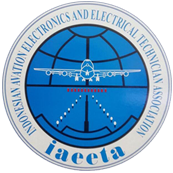RUNWAY END SAFETY AREA: OVERRUN AND UNDERSHOT SAFETY RISK ANALYSIS
DOI:
https://doi.org/10.52989/jaet.v4i2.148Keywords:
Safety Risk Analysis, Runway End, SafetyAbstract
An airport is a complex facility for passenger and cargo processing, aircraft arrival, departure, and maintenance. Ensuring safe and comfortable flights for its passengers requires implementing aviation security and safety improvements in tandem with the growing number of aircraft in operation. Aviation operators and regulators are always focused on issues and potential incidents that jeopardize aviation safety and security, particularly during the landing and takeoff phases of flight, which include overrun and undershoot occurrences. Therefore, a study is required to determine the event’s probability. By adopting research methods that have been developed by the European Aviation Safety Agency (EASA), this research aimed to analyze the risk of overrun and undershoot at Sultan Syarif Kasim II Airport (SSK II) and Raja Haji Fisabilillah Airport (RHF). The research method is quantitative by comparing data collected with the Target Level of Safety (TLS), which is quantified and recommended by the aviation authority International Civil Aviation Organization (ICAO) and the British Civil Aviation Authority (CAA UK), where the acceptable TLS according to ICAO is 6.6 x 10-7 while according to the UK CAA it is 4 x 10-7. The result showed that the probability value of overrun and undershoot at SSK II Airport averages 0.66 x 10-7 and 2.98 x 10-7 at RHF Airport. This indicates that at RHF Airport, there is a higher possibility of overrun and undershooting risk frequency than at SSK II Airport. The fact that RHF Airport has just one RESA is the primary element affecting the high-risk likelihood at RHF Airport. The chance of overrun and undershoot occurrence frequency dropped to an average of 2.06 x 10-7 after simulating RESA compliance per ICAO regulations.
References
Arnaldo Valdés, R. M., Gómez Comendador, F., Mijares Gordún, L., & Sáez Nieto, F. J. (2011). The Development of Probabilistic Models to Estimate Accident Risk (Due to Runway Overrun and Landing Undershoot) Applicable to The Design and Construction of Runway Safety Areas. Safety Science, 49(5). Retrieved from https://doi.org/10.1016/j.ssci.2010.09.020
Ayiei, A., Murray, J., & Wild, G. (2020). Visual Flight Into Instrument Meteorological Condition: A Post Accident Analysis. Safety, 6(2). Retrieved from https://doi.org/10.3390/safety6020019
Desryanto, N. (2018a). Kajian Runway End Safety Area di Bandara Internasional Adisucipto Yogyakarta. Langit Biru: Jurnal Ilmiah Aviasi, 11(1).
Desryanto, N. (2018b). Kajian Runway End Safety Area di Bandara Internasional Adisutjipto Yogyakarta. Langit Biru: Jurnal Ilmiah Aviasi, 11(1).
Di Mascio, P., Cosciotti, M., Fusco, R., & Moretti, L. (2020). Runway Veer-Off Risk Analysis: An International Airport Case Study. Sustainability (Switzerland), 12(22). Retrieved from https://doi.org/10.3390/su12229360
Drees, L., Mueller, M., Schmidt-Moll, C., Gontar, P., Zwirglmaier, K., Wang, C., … Straub, D. (2017). Risk Analysis of the EASA Minimum Fuel Requirements Considering the ACARE-Defined Safety Target. Journal of Air Transport Management, 65. Retrieved from https://doi.org/10.1016/j.jairtraman.2017.07.003
EASA. (2014). Study on Models And Methodology for Safety Assessment of Runway End Safety Areas (RESA).
Franklin, R. (2022). Quantitative Methods I: Reckoning With Uncertainty. Progress in Human Geography, 46(2). Retrieved from https://doi.org/10.1177/03091325211063635
Hong, S.-B., Dilshod, T., & Kim, D. (2016). An Application of the Risk Assessment Model for Runway End Safety Areas to a Specific Airport in Korea. International Journal of Control and Automation, 9(12). Retrieved from https://doi.org/10.14257/ijca.2016.9.12.24
Iqbal, T., Iqbal, M. Z., Kashif, M., & Farid, G. (2023). Identifying Process Deterioration in Weighted Exponentially Distributed Time Between Events. International Journal of Analysis and Applications, 21. Retrieved from https://doi.org/10.28924/2291-8639-21-2023-3
Jones, L. (2016). An Active Safety Net for Runway Overruns. In Safety Forum 2016: Safety Nets (Vol. 2016-June, pp. 59–69). EUROCONTROL.
Moore, A. J., Schubert, M., Dolph, C., & Woodell, G. (2016). Machine Vision Identification of Airport Runways with Visible and Infrared Videos. Journal of Aerospace Information Systems, 13(7). Retrieved from https://doi.org/10.2514/1.I010405
Nadhirah, G., Fadjarwati, N., & Si, M. (2021). Analisis Kinerja Aset Fasilitas Sisi Darat Bandara Wiriadinata Berdasarkan Key Performance Indicators of Facility. Jurnal Manajemen Dirgantara, 14(1).
Riyadi, R., Hendra, O., Sadiatmi, R., Nugraha, W., & Amalia, D. (2021). Potensi Bahaya pada Ujung Runway 24 Bandar Udara: Sebuah Implementasi Manajemen Resiko. Journal of Airport Engineering Technology (JAET), 1(2), 54–60. Retrieved from https://doi.org/10.52989/jaet.v1i2.13
Saputra, A. D. (2017). Studi Analisis Penyebab Runway Excursion di Indonesia Berdasarkan Data Komite Nasional Keselamatan Transportasi (KNKT) Tahun 2007-2016. Warta Ardhia, 43(2), 93–104. Retrieved from https://doi.org/10.25104/wa.v43i2.305.93-104
Štumper, M., Kraus, J., Vittek, P., & Lališ, A. (2015). Runway Safety Areas. MAD - Magazine of Aviation Development, 3(16), 5. Retrieved from https://doi.org/10.14311/mad.2015.16.01
Szczepaniak, P., Jastrzebski, G., Sibilski, K., & Bartosiewicz, A. (2020). The Study of Aircraft Accidents Causes by Computer Simulations. Aerospace, 7(4). Retrieved from https://doi.org/10.3390/aerospace7040041
Usui, K., Iwasaki, T., Yamazaki, T., & Ito, J. (2022). Numerical Simulations and Trajectory Analyses of Local ‘Karakkaze’ Wind: A Case That Could Have Contributed to an Aircraft Accident at Narita Airport on 23 March 2009. Scientific Online Letters on the Atmosphere, 18. Retrieved from https://doi.org/10.2151/sola.2022-023
Downloads
Published
How to Cite
Issue
Section
License
Copyright (c) 2024 Dzakia Paquita, Pintanugra Persadanta

This work is licensed under a Creative Commons Attribution-NonCommercial 4.0 International License.












_1.png)




